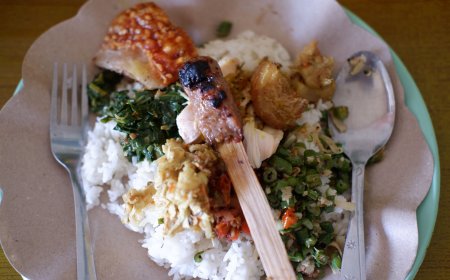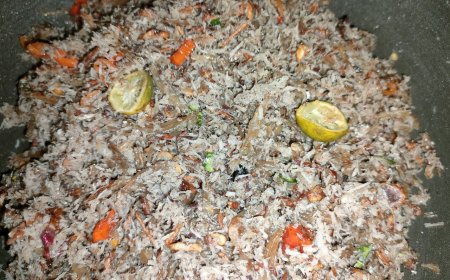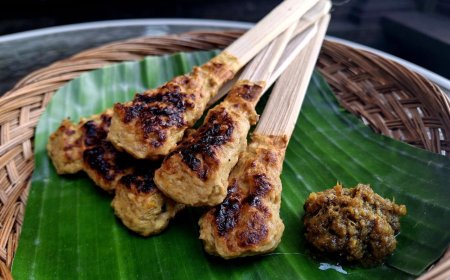Belimbing Leaf Lawar: Traditional Balinese Cuisine to Enhance Immunity
Enjoying traditional dishes while strengthening the body’s health? Belimbing Leaf Lawar, a signature dish from Bali that combines fresh belimbing leaves with authentic spices, offers not only a rich flavor but also extraordinary health benefits. Curious about the local wisdom behind the deliciousness of this Belimbing Leaf Lawar?
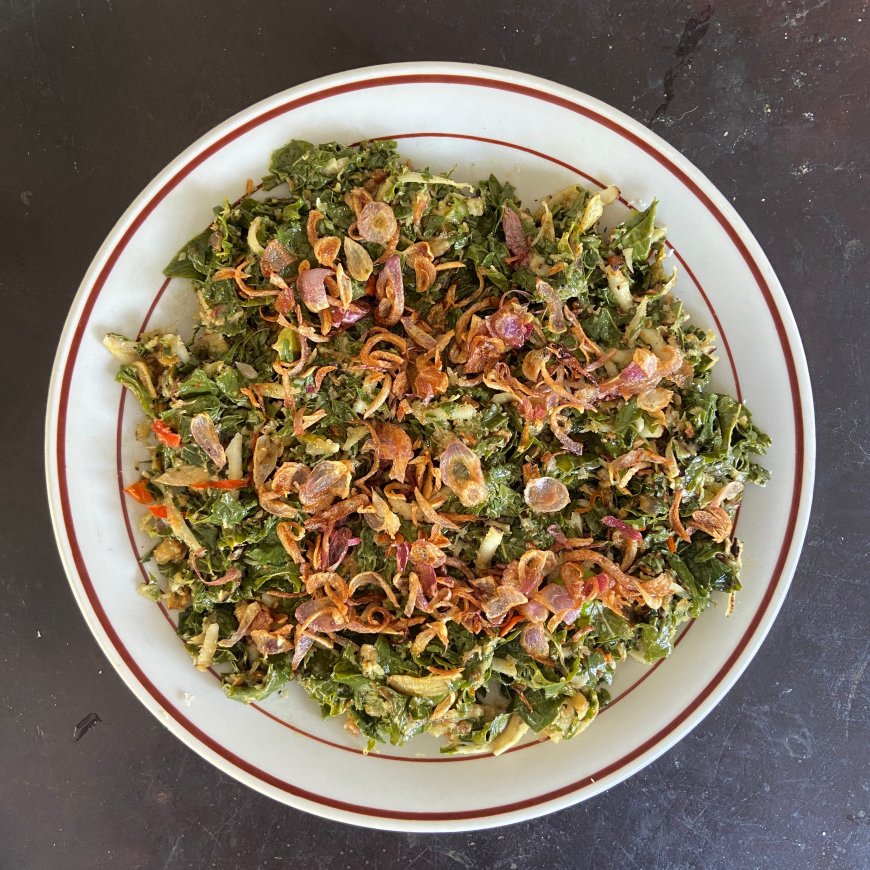
Belimbing leaf lawar is one example of traditional Balinese cuisine that is rich in nutritional value and health benefits. This dish combines fresh belimbing leaves with authentic Balinese spices, creating a rich flavor while offering extraordinary health benefits. In Balinese tradition, lawar is often served at religious ceremonies and cultural events, reflecting the philosophy of living in harmony with nature.
In this lawar, belimbing leaves not only add texture and a unique taste but also provide health benefits. Belimbing leaves are known to be rich in antioxidants and other nutrients believed to enhance the body's immune system. This natural content makes belimbing leaf lawar not only delicious but also beneficial for immunity, especially when facing dynamic health conditions.
This article will thoroughly discuss the process of making belimbing leaf lawar, from selecting fresh belimbing leaves to blending the characteristic Balinese spices that provide an authentic taste. Follow the steps to personally experience the benefits and deliciousness of belimbing leaf lawar as a healthy traditional dish!

Belimbing Leaves with Stems (Source: Personal Collection)
The first step in making belimbing leaf lawar is to choose fresh, quality belimbing leaves. Be sure to separate the leaves from the stems and select only the young leaves to ensure that the texture and taste remain soft and enjoyable during preparation.
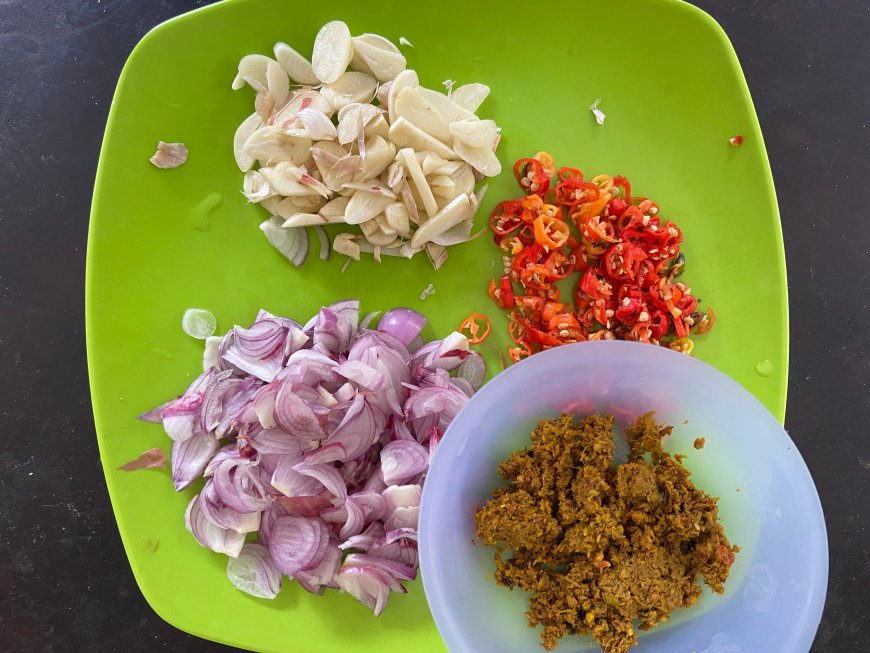
Main Ingredients for Belimbing Leaf Lawar (Source: Personal Collection)
The next step is to prepare the other ingredients, which consist of two parts the main ingredients for the belimbing leaves and the ingredients for kalas. Kalas is the secondary ingredient in making belimbing leaf lawar. Later, kalas will be combined with the belimbing leaf ingredients to create a rich, distinctive flavor.
Main Ingredients:
- Red onions
- Garlic
- Base Wangen
- Salt
- Shrimp paste
- Lime skin
- Palm sugar
- Red chili
- Grated coconut
Base Wangen Ingredients:
- Coriander
- Garlic
- Kencur
- Candlenuts
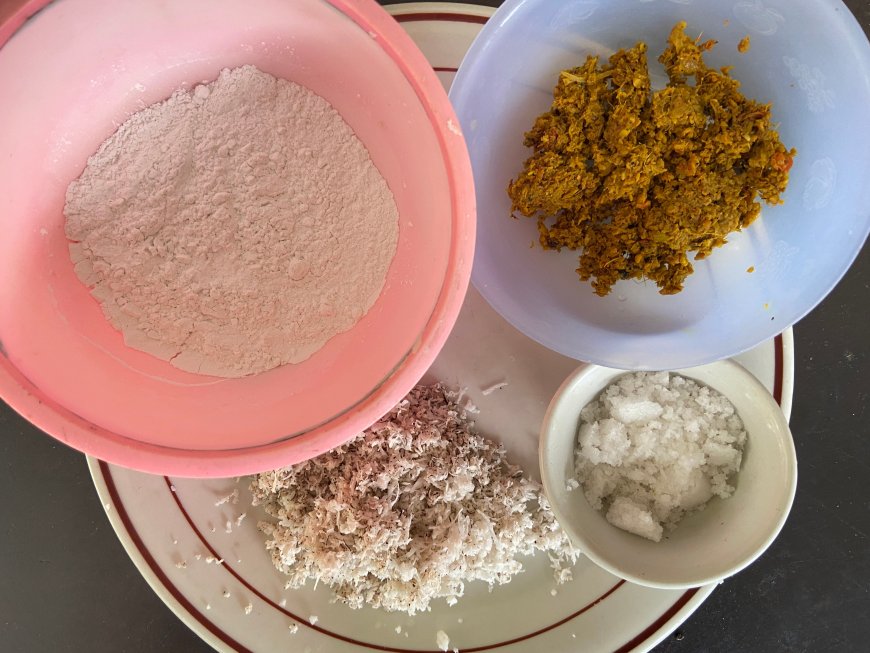
Ingredients for Making Kalas (Source: Personal Collection)
Meanwhile, the ingredients for kalas are as follows:
Ingredients for Kalas:
- Grated coconut made into coconut milk
- Salt
- Rice flour
- Bay leaves
- Base Genep
Base Genep Ingredients:
- Turmeric
- Ginger
- Kencur
- Galangal
- Red onions
- Garlic
- Coriander
- Black pepper
- Lemongrass
- Shrimp paste
- Candlenuts
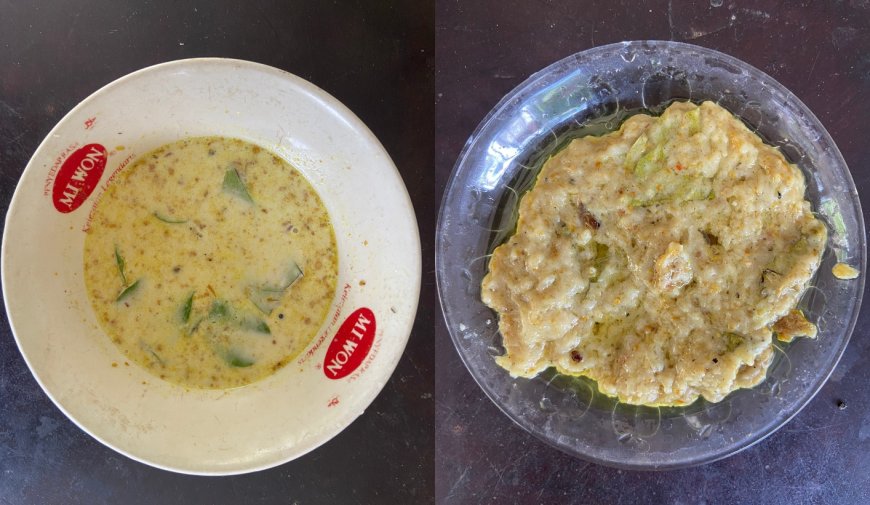
Kalas Before Cooking and After Cooking (Source: Personal Collection)
Now, we will start by making kalas first. This kalas will provide a distinctive savory flavor that perfectly blends with the belimbing leaves. Here are the steps:
- Grind the base genep until smooth, then saute until fragrant.
- Grate the coconut, then squeeze it to obtain the coconut milk.
- Prepare a pan, then mix the coconut milk, sauteed base genep, rice flour, salt, and bay leaves. Cook all the ingredients until done, stirring occasionally to prevent clumping.
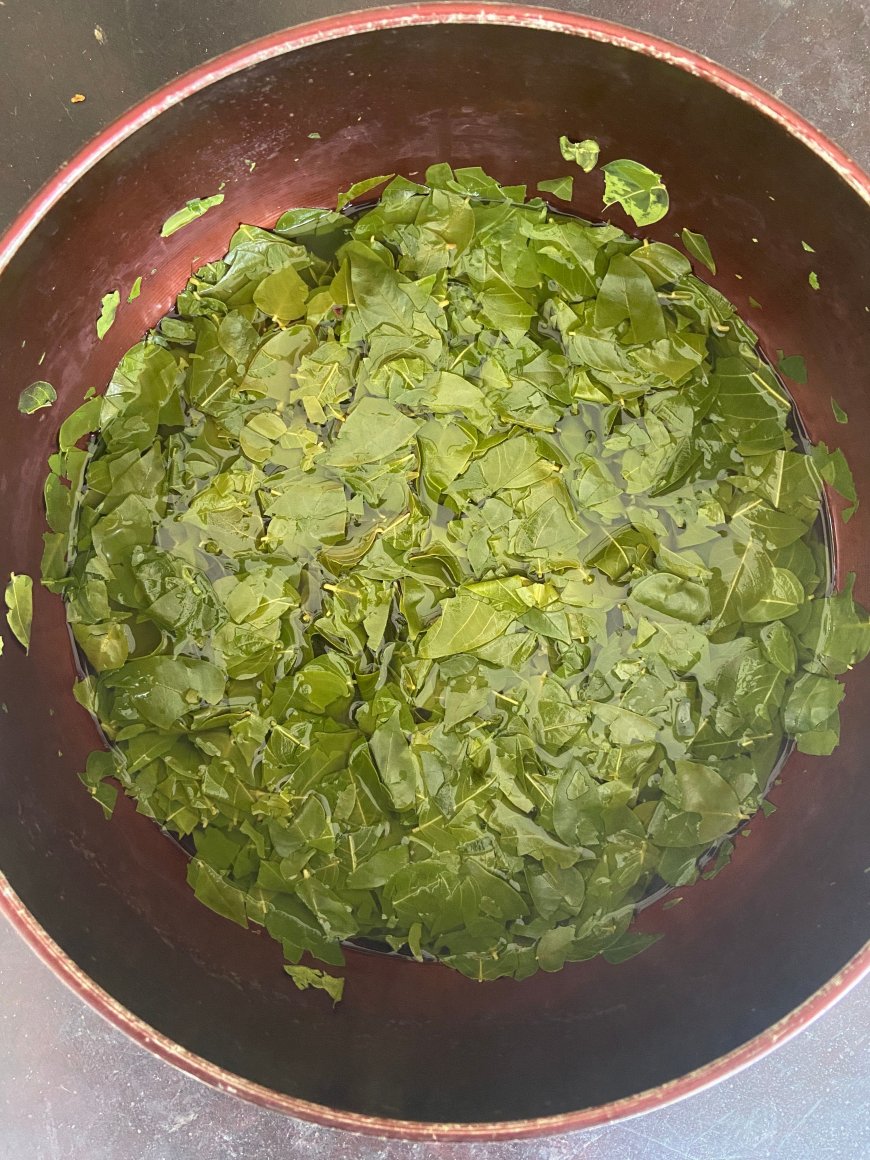
Belimbing Leaves That Have Been Boiled (Source: Personal Collection)
While waiting for the kalas to cook, we can start boiling the belimbing leaves until their texture becomes soft. After that, remove the belimbing leaves and squeeze them to reduce moisture. Let them sit for a while so they are not too hot before proceeding to the next step.
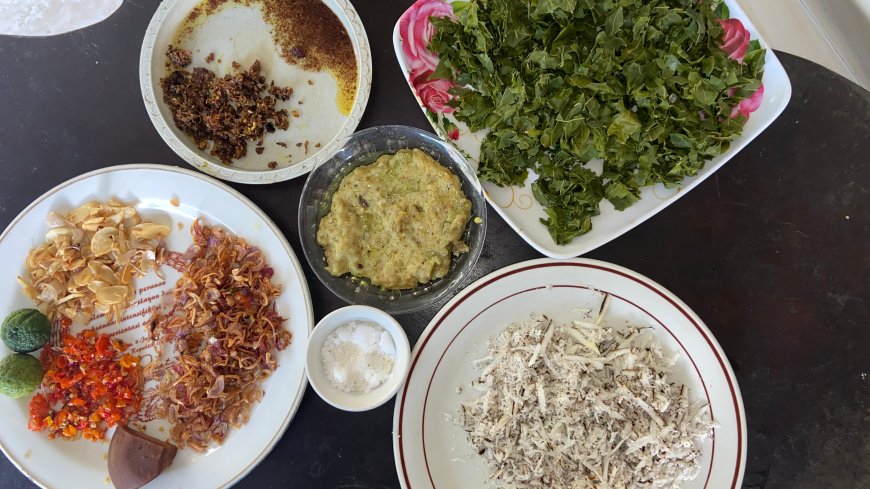
Main Ingredients and Cooked Kalas for Belimbing Leaf Lawar (Source: Personal Collection)
The final process is to combine all the prepared ingredients, which are the belimbing leaves, main ingredients, and cooked kalas. The steps are as follows:
- Fry the red onions that have been peeled and thinly sliced until cooked.
- Fry the garlic that has been peeled and thinly sliced until cooked.
- Fry the red chili that has been thinly sliced until cooked.
- Sauté the base wangen until fragrant.
- Briefly roast the coconut, then grate it into a coarser size.
- Thinly slice the palm sugar.
- Prepare a container, then mix the palm sugar, red onions, garlic, red chili, base wangen, shrimp paste, kalas, grated coconut, lime skin juice, and salt.
- Stir all the ingredients in the container until well combined.
- Finally, sprinkle fried onions on top of the finished belimbing leaf lawar.
- Serve the belimbing leaf lawar on a plate and it’s ready to enjoy.

Belimbing Leaf Lawar Ready to Eat (Source: Personal Collection)
The process that has been undertaken results in belimbing leaf lawar that is not only delicious but also rich in health benefits. The combination of spices and natural ingredients makes this dish special, bringing authentic Balinese flavor to every bite. With all the nutrients it contains, belimbing leaf lawar is an excellent choice for improving health and enhancing the immune system.
According to research published in the Journal of Medicinal Plants Research, belimbing leaves (Averrhoa bilimbi) are known to contain active compounds such as vitamin C, flavonoids, and antioxidants that play an important role in boosting the immune system. These compounds help fight free radicals and strengthen the body’s defenses against various diseases. The research indicates that regular consumption of belimbing leaves can provide overall health support, making it a highly valuable natural ingredient.
With the deliciousness and benefits it offers, there is no reason not to try making belimbing leaf lawar at home. Let us utilize the local wisdom and culinary traditions of Bali as a step to maintain our health. Come on, create a healthy and delicious dish that can be enjoyed with family! By serving belimbing leaf lawar, we not only celebrate cultural richness but also care for our bodies in a natural and flavorful way.


















































